Vickers Medium MkII tank
This preserved 1920s British Vickers Medium MkII tank can be found at the RAAC Memorial, Army Tank Museum, Puckapunyal, Victoria, Australia.
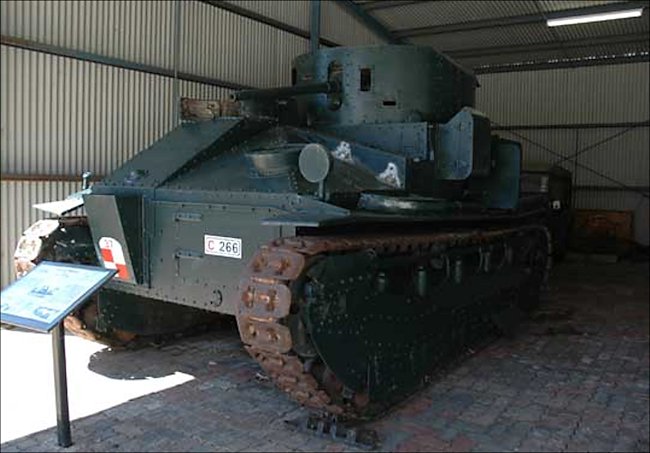
Surviving British Vickers Medium MkII tank at the RAAC Memorial, Army Tank Museum, Puckapunyal, Victoria, Australia.
Location
The Royal Australian Armoured Corps RAAC Memorial and Army Tank Museum has more than 70 armoured fighting vehicles on display in Hopkins Barracks, the home of Australian Army Armour at Puckapunyal, Victoria. It is located on Herakleion Parade, Puckapunyal VIC 3662, Australia. BUT before you visit phone to see if it is open. The Museum is within an Australian Army military base and security is tight. For some time it has been closed to the public when security alert levels have been raised due to the threat of terrorist attacks. Only Military personnel and their families were allowed to visit. Hopefully the public will be allowed back soon. It is best to book in advance as they like to do group tours. The phone number is +61 (0)3 5735 7285. If it is open again to the public you will still need to take ID. All visitors over 18 years of age must provide valid photo identification Driver’s Licence, Passport, Student card, ADF pass or other appropriate photographic id) to gain access to the museum.
Specifications
The Vickers Medium tank weighed 11.7 tons and was powered by an Armstrong Siddeley V-8 petrol engine that produced 90 hp. The tank had a top road speed of 15mph (24 km/h) which may seem extremely slow by today's standards but it was 3x faster than to top speed of the heavy tanks of WW1 and matched the speed of the WW1 Whippet 'light' tank. It was technologically advanced in other more important ways. It had a top mounted gun turret that could travers 360°s.
The five man crew were protected by armour plating that ranged in thickness from 4 mm to 6.25 mm. It had an operational range of around 120 miles (190 km) before it needed to refuel which was over double the range of the WW1 tanks. It was armed with a 3 pounder quick firing (QF 3pdr 47mm) gun. It was also armed with two 0.303 Vickers machine guns (7.7mm) and four 0.303 French Hotchkiss model 1914 machine guns.
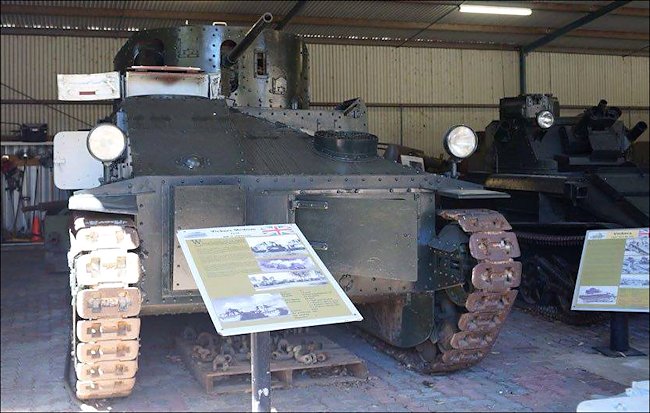
Compared with the Vickers MkVI light tank the Vickers Medium MkII tank had a very large profile and an easy target for the enemy to locate. (photo by Jimy Sharp)
WW2 tank crews trained on Mediums
In 1939 tank crews trained on any armoured vehicle or tank that was available. What follows are the memories of one of those 'tankers': - 'After some time, we acquired two big tanks - Vickers Medium tanks dating from the mid-20s. I was taken out for a ride in one. There was no floor to the turret, and I had to clamber over bits of machinery as the turret was traversed by hand, there being no powered traverse. This action resulted in my feeling so sea-sick that I leant out of the side port for fresh air and inadvertently burnt myself on the hot exhaust Pipe.'
'It was a work of art to get the engines to run and involved removing all the spark plugs, heating them in a dish of petrol and screwing them back into the cylinders. This was easier said than done as they were too hot to handle and the plug holes were almost inaccessible. The next step in the starting drill for these monsters was most impressive and involved five members of the crew.'
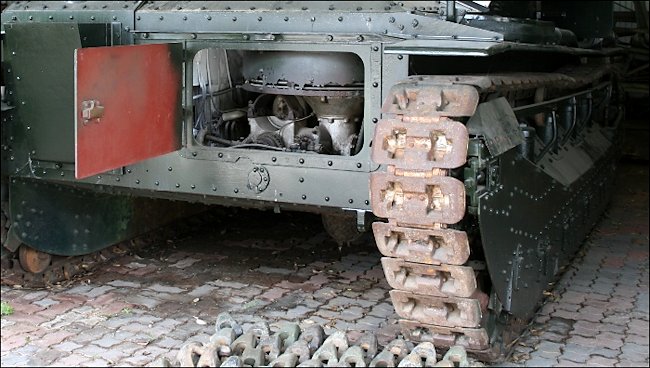
Front engine access hatch on a Vickers Medium MkII tank
'Two manned the massive starting handle inside the tank, another stood by to operate the halt-compression lever, a third, poor man, armed with a fire extinguisher, crawled along the left-hand side of the Ricardo engine to place his hand over the carburettor air intake, there being no choke.'
'The driver, seated on his throne, covered the right-hand air intake with his left hand while his right hand seized the magneto crank ready for the word 'go'. The commander and often one other stood outside in front with fire extinguishers. On the command 'Start up', the driver's right hand whirled the magneto crank as fast as he could often skinning his knuckles on a convenient bolt, while the slaves inside heaved on the starting handle which was cunningly placed so that it too scraped the knuckles of the crew members using it on projection bolts as one heaved it round.'
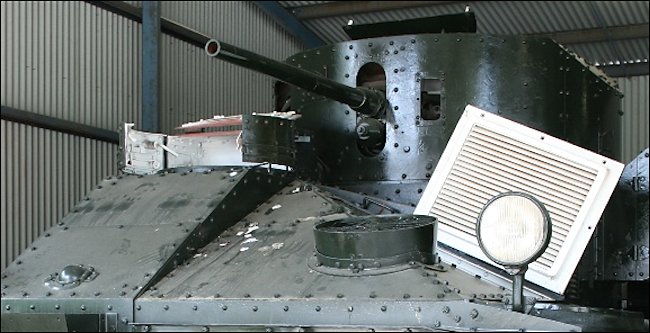
Armoured Driver's cupola in the open position on the left on a British Vickers Medium MkII tank
'As soon as the engine fired, the compression lever was moved to 'full'. The motor either died on the spot or burst into flames. When it was finally running, the clatter was intense, and one had to lip-read if one was inside the beast. It was best to keep away from the revolving prop shaft running through the turret area, and one should never touch the steering clutches which were also totally unprotected.'
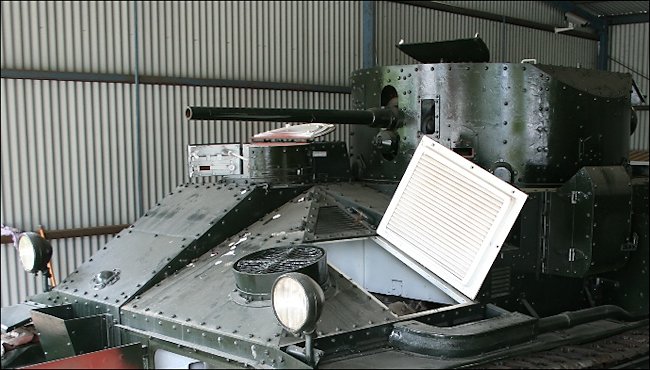
Side engine hatch on a Vickers Medium MkII tank at the RAAC Memorial, Army Tank Museum, Puckapunyal, Australia
Where can I find other preserved Vickers Medium Tanks?
- MkI - Special Services Battalion Museum, Bloemfontein, South Africa
- MkII - Bovington Tank Museum (UK) – running condition
- MkII - Royal Australian Armoured Corps Tank Museum, Puckapunyal, VIC, Australia
- MkIIA - U.S. Army Center for Military History Storage Facility Anniston, AL, USA
- Source - Pierre-Oliver Buan - http://the.shadock.free.fr/Surviving_Panzers.html
World War Two books

